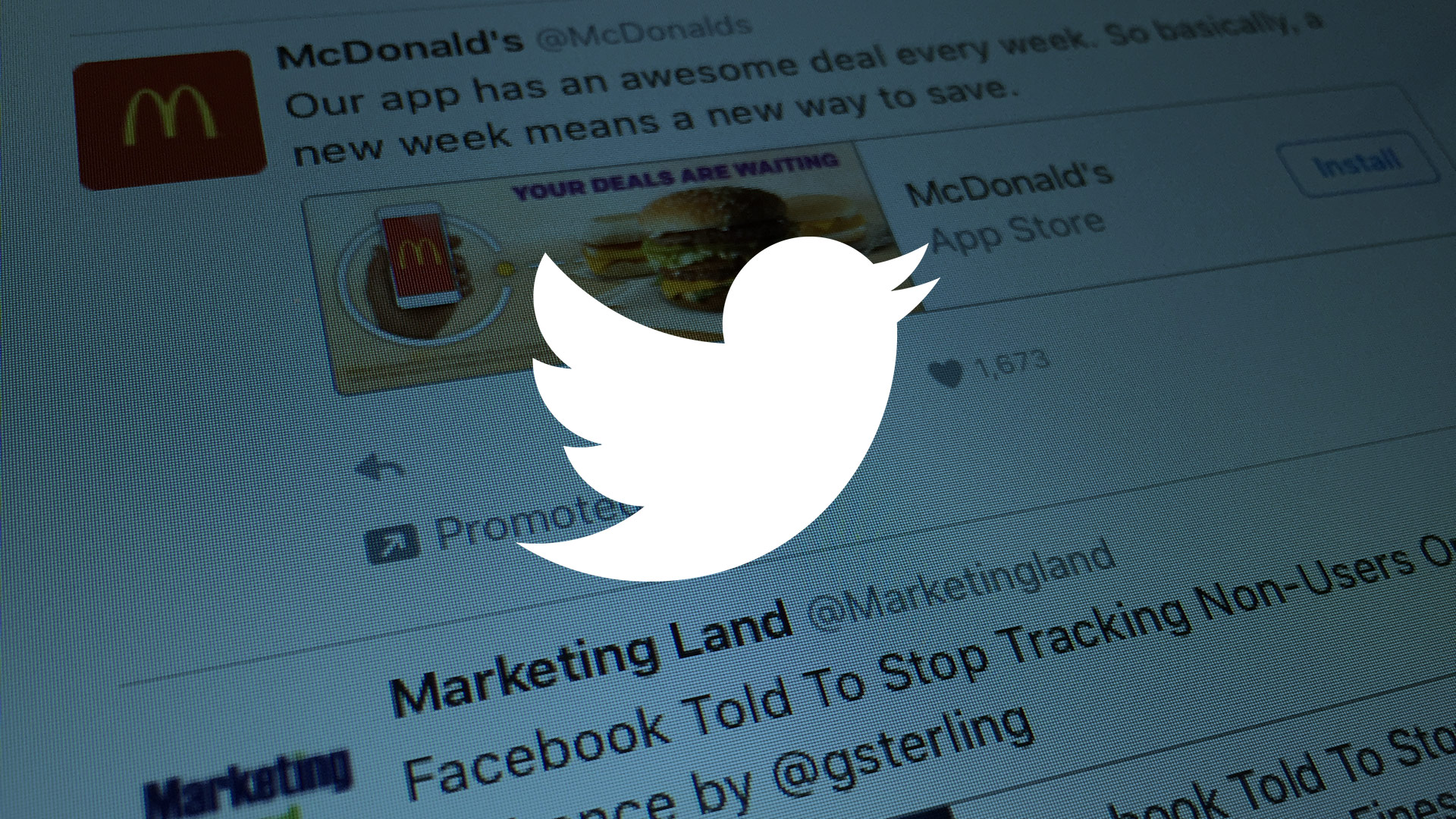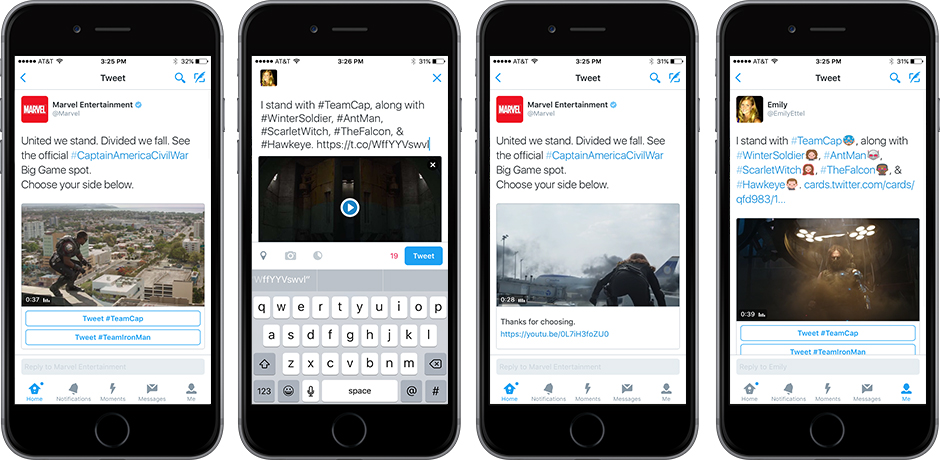Twitter’s newly incentivized conversational ads could help its pricing problem
Twitter is adding a way for brands to incentivize people to tweet about their ads and get some extra, potentially free, impressions.
If Twitter can get more people tweeting about brands’ ads, then maybe brands will count those free tweets’ audiences as extra impressions and consider the social network’s ads more cost-effective. It’s a big “if.” But considering how Twitter’s ad business is hurting, it can’t hurt to try.
Earlier this year, Twitter introduced its conversational ad format that brands could use to prompt someone to send a tweet carrying a branded hashtag and photo or video for their own followers to see. It’s a clever ploy. And as of Thursday, Twitter is extending it to all advertisers around the world and adding an incentive for people willing to become unpaid megaphones for marketers.
Now, brands can add an Instant Unlock card to their conversational ads that teases people with content like a movie trailer or Q&A video that they can only access once they send whatever tweet the brand wants them to send.
It seems pretty clear why brands would be interested in these ads: They’re a way to gain extra impressions for free. And if someone echoes a brand’s message to their followers, that potentially carries more social currency than a retweet of the brand’s original tweet.
It’s even more clear why Twitter would be interested in selling these ads: They might satiate the advertisers complaining its ads are too expensive. Twitter is coming off two straight quarters of lower-than-expected demand from advertisers, and one of the reasons advertisers aren’t lining up around the block to buy its ads appears to be the same reason mainstream masses of people haven’t historically been lining up to buy a Tesla. Like people eyeing Tesla’s Model S, advertisers have had a hard time looking past the price tag of Twitter’s ads, which come at a premium, and “this has proven to be a headwind in growing Twitter’s share of overall social budgets,” Twitter said last week in a letter to shareholders.
So Twitter has been trying to roll out its versions of Tesla’s middle-class-friendly Model 3. Its autoplay video ads have led to a 64-percent year-over-year decline in the average price brands pay each time someone engages with one of their ads. And its conversational ads could lower brands’ costs even further if they factor in the extra impressions these ads can elicit.
Brands that have tested the conversational ads, on average, have received 34 free impressions for every 100 impressions they paid for, according to Twitter. So if you’re a brand paying Twitter $3.00 for every thousand people who see your ad, you could wind up getting $4.02 worth of impressions.
But it’s not that simple. Twitter doesn’t sell ads by impressions. So either a brand has to do its own math to work out the value of those extra impressions by reconciling it with whatever it is paying Twitter for — like video views, link clicks or retweets and replies — or it has to guesstimate how many of those actions the extra impressions generated based on how many actions the ad averaged per paid impression. And that’s probably not the only complication.
If a conversational ad campaign is pushing photo content, then the advertiser is paying for each social engagement, including retweets of the tweets people shared from the original ad (i.e., the tweets that would have counted as free impressions if not for the retweets). But if they’re pushing video views, then they’ll only be charged for the initial ad view and the extra impressions and subsequent views will be free of charge. This was already the case when Twitter first announced conversational ads earlier this year.
If what a brand ultimately cares about are impressions and how much they cost at the end of the day, and engagements are gravy, then Twitter is going to give them a better way of gauging them. Now, Twitter will show advertisers who use its Brand Hub analytics tool the number of people who tweet using the advertised hashtag, how many extra impressions the campaign received from those tweets and a selection of the most influential tweets. And US advertisers with access to Twitter’s TrueVoice score will be able to see how these conversational ads affect their share of conversation on Twitter about brands.
Opinions expressed in this article are those of the guest author and not necessarily MarTech. Staff authors are listed here.
Related stories


